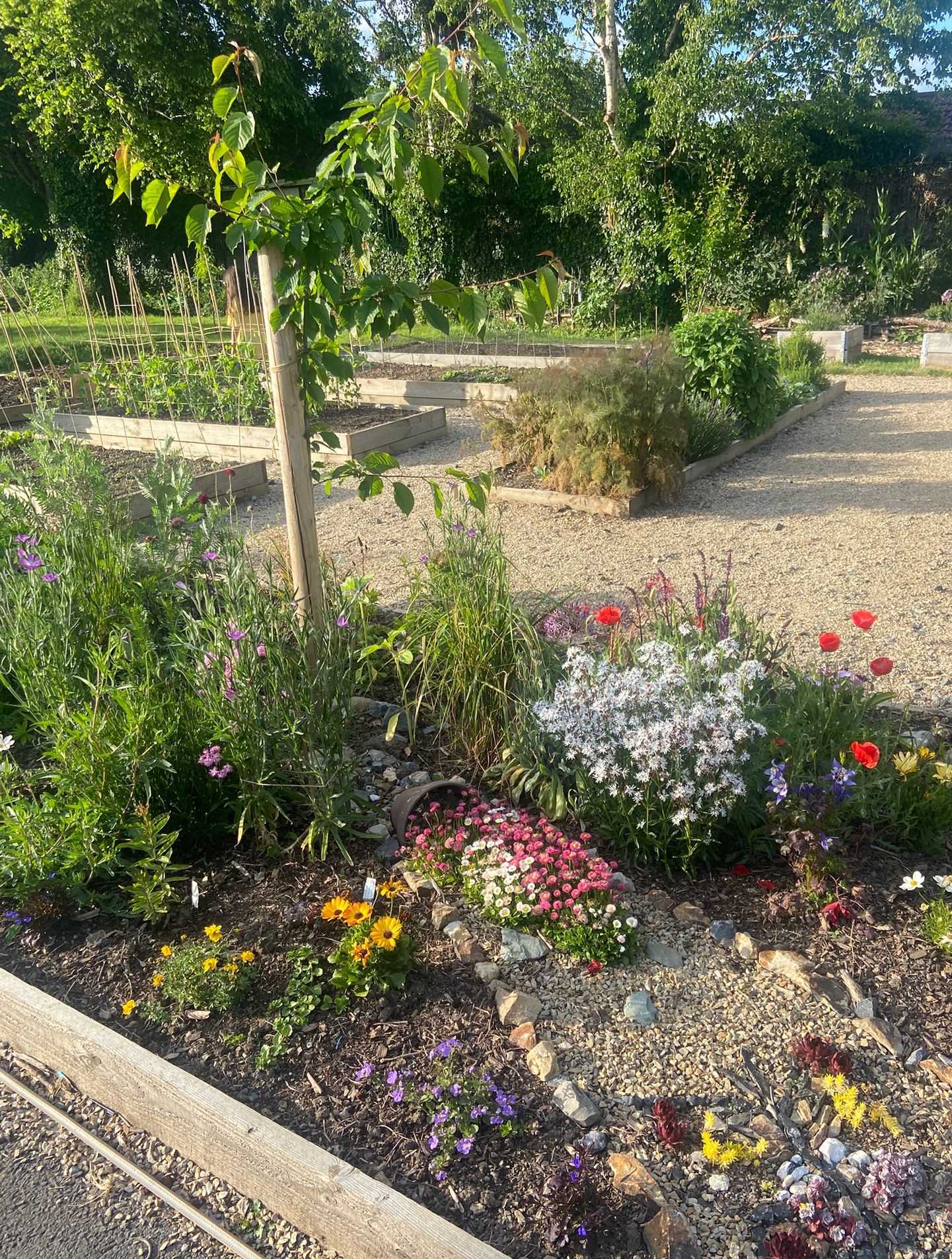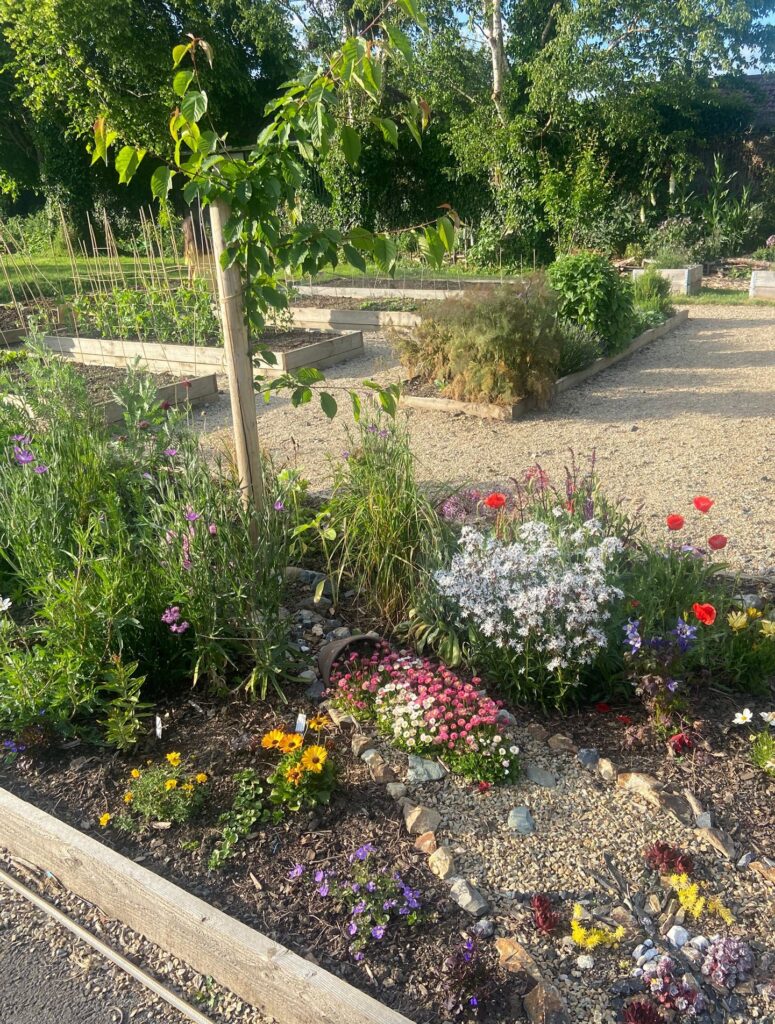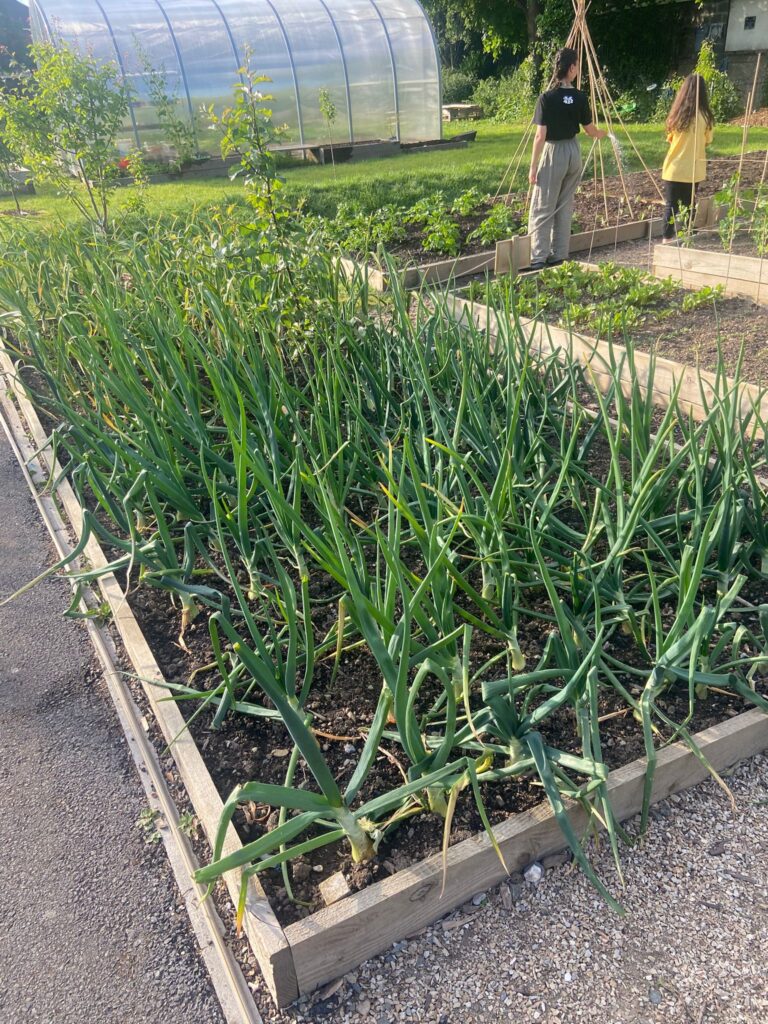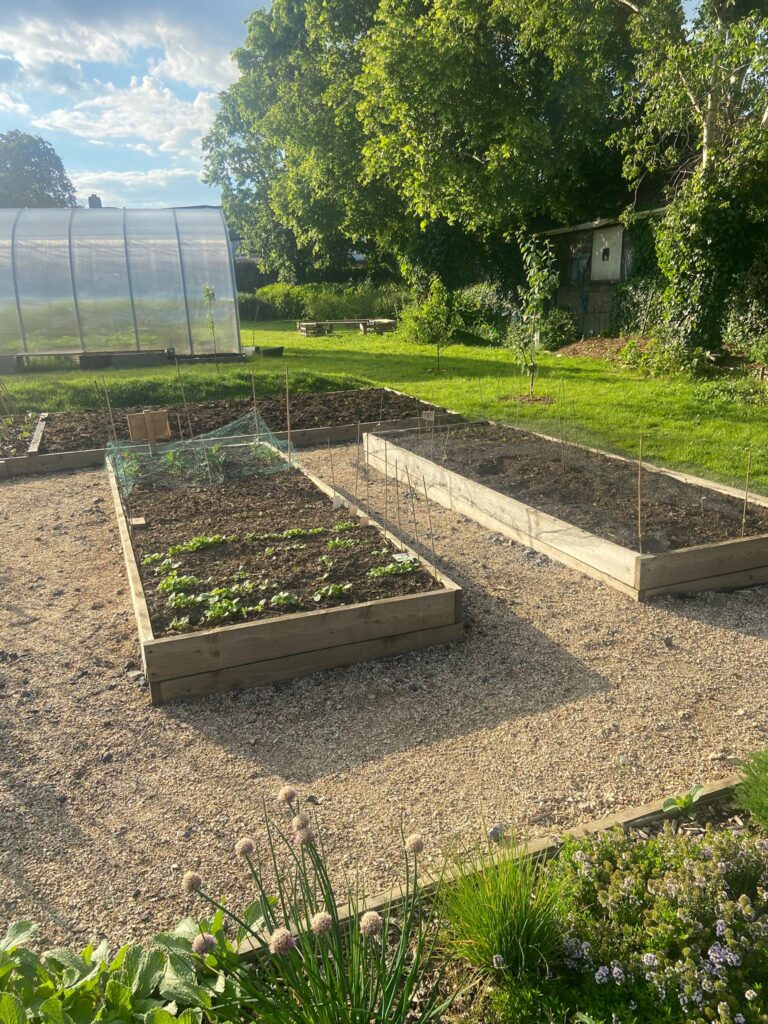
On Wednesday evening I took part in a Hedgerows Cycle in Dublin 12 to mark National Biodiversity Week 2025. Funded by the Irish Environmental Network and co-organised by Dublin Cycling Campaign and Hedgerows Ireland, the event aimed to celebrate the biodiversity benefits of hedgerows, showcase some of the area’s hedgerows, and explore how hedges can be incorporated into small urban gardens.
Our meeting place was Pearse Park Community Garden, a recently-established community garden in the Dublin City Council-run Willie Pearse Park in Crumlin. In the past couple of years this corner of the park has been transformed from an unremarkable grassy area into a vibrant garden containing a polytunnel and raised beds for growing food, a native hedgerow and wildflower area, berry bushes and fruit trees, a composting system, and a seating area. After every work session or social event there, the garden whatsapp group is updated with photographs of neighbours of all ages working together or enjoying a cup of tea in this colourful, safe and traffic-free space.

I’m lucky to live near this very special place, and having observed the evolution of the garden over the past few years and taken part in some events and workshops there, I’ve seen at first hand how it’s not just a physical space that has been built there, but a vibrant and diverse community. Everyone is welcome there, people who are new to the area can get to know their neighbours, different generations can mix, recipes and gardening tips are swapped, and friendships develop. A dedicated group of volunteers keep everything watered during dry spells, and events such as apple-pressing workshops or tomato plant giveaways help to bring in new members and spread the word about the joy of growing and eating your own food.

Tomorrow (24 May) marks exactly ten years since Laudato Si’ was published, and Pope Francis’ message regarding integral ecology is more relevant than ever. It is becoming increasingly clear that environmental and societal problems are intricately linked, as are the solutions to these problems.
In the case of this particular garden, the volunteers’ work has enhanced biodiversity in the garden by careful planting and sensitive management, and helped members to learn how to grow nutritious organic food, both of which are important actions for the climate. The social benefits of the garden, however, the friendships and support networks and opportunities for connection that this project facilitates, are possibly more significant. It’s a vibrant illustration of how everything is interlinked, how care of creation and care for the common good intersect.

Here in the JCFJ we take a special interest in community gardens as an example of integral ecology in practice, and the topic has previously featured on this blog.
Just this week we received a paper copy of the most recent issue of Promotio Iustitiae, the journal of the Social Justice and Equality Secretariat of the General Curia of the Society of Jesus. It features the article ‘Community Gardens: Integral Ecology in Practice’ by JCFJ staff Dr Kevin Hargaden and Dr Ciara Murphy. This journal is an important Jesuit publication that is distributed worldwide and we are very glad to see this topic getting due attention.
After establishing a theological basis for ecclesial community gardens by reflecting on the account of Eden in Genesis 2 and examining some community garden projects established in the Irish Jesuit Province, the article’s authors conclude that community gardens ‘warrant our attention because they bear witness to this profound theological truth: human beings were not made to compete and to strive; humans are not ultimately valued because of what they produce or consume; and they are not [meant to be] alienated individuals or even a solitary species. As the Scriptures testify, the human being is a person in relationship with their Creator, themselves, other humans, and the whole created environment. The garden is a convivial space where we can discover what we were made to be.’
If you’re not sure whether there’s a community garden in your area, or if you’d like to set one up, the Community Gardens Ireland website has a map and other useful information. And If you’re based in Dublin and have access to a bike, you can join a Community Gardens Cycle tomorrow, another Biodiversity Week event from Dublin Cycling Campaign, co-hosted with Dublin Community Growers, during which you’ll get to see four of northside Dublin’s community gardens.
But back to our hedgerow cycle. After learning about hedgerow management by looking at the recently-planted native hedge in the community garden, we cycled to two other sites in the area and then back to the garden. A bit tired after the spin, but inspired by what we had seen, our group sat down on furniture made from upcycled pallets and enjoyed some conversation and refreshments. At this stage it was beginning to get dark and a couple of blackbirds were leading the dusk chorus in the mature trees that border one side of the garden and give shelter to the seating area. I was reminded again of how everything is connected and all species are interdependent, and I was thankful to the volunteers who lovingly tend this vibrant corner of our neighbourhood. Community gardeners are are cultivating spaces not just for biodiversity and food production, but for conviviality and human flourishing.
Thanks to Catherine Cleary for the photographs.

